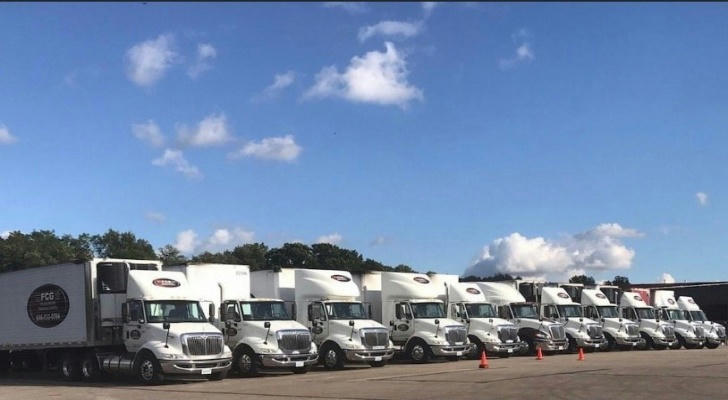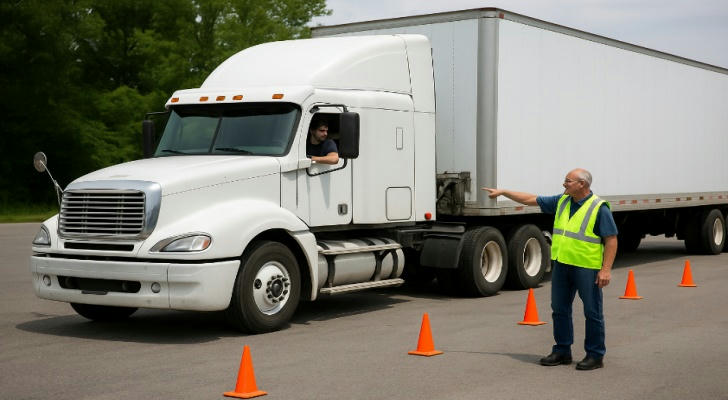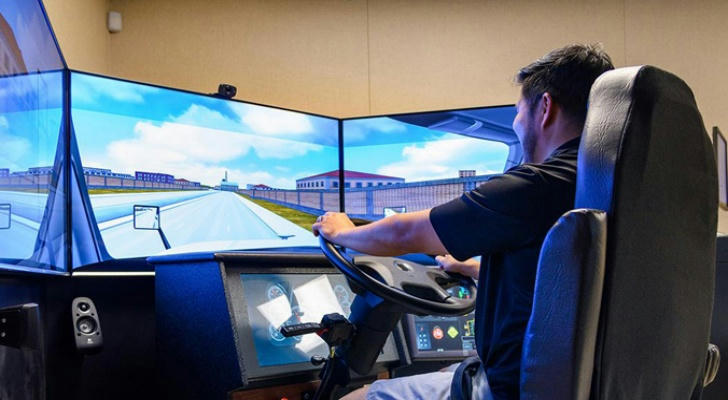From Rookie to Road Pro: 5 Must-Know Resources for Aspiring Truck Drivers
In the U.S., becoming a truck driver is a path many choose for its long-term potential and independence. According to the American Trucking Associations (ATA), the trucking industry moves over 70% of all freight in the country—creating steady demand for new drivers every year.

But entering the industry isn’t just about passing a test. It requires training, practice, and continuous improvement. This guide introduces five essential and widely used resources that can help you build real skills, understand industry expectations, and grow with confidence—step by step.
1. Truck Driving Schools: The Essential Starting Point 🎓
Professional truck driving schools are the most common and structured way to prepare for the Commercial Driver’s License (CDL) exam. These schools offer:
• Classroom instruction on federal rules and driving laws
• Behind-the-wheel practice in real trucks
• Training for inspections, backing, shifting, and road tests
Look for programs certified by PTDI (Professional Truck Driver Institute) or those registered in the FMCSA’s Training Provider Registry. These certifications ensure that the school meets national training standards.
Tip: Ask how many hours of actual driving time you'll get. Aim for programs offering at least 40–60 hours behind the wheel.

2. Community Colleges & Adult Education Programs: Budget-Friendly Options 🏫
For those who prefer local, more affordable training, community colleges and adult learning centers often offer CDL programs at reduced tuition. Advantages include:
• Lower costs, especially for in-district residents
• Flexible schedules—evening/weekend classes are common
• Career services, like resume help or local job referrals
Many of these programs collaborate with local employers, giving students early access to job leads or internships.
Example: Houston Community College, Ivy Tech, and Salt Lake Community College offer CDL training that balances theory and real driving hours at competitive prices.

3. Online Learning Tools: Build Knowledge on Your Schedule 📱
Complement your hands-on training with digital tools that let you study anytime:
• Apps like CDL Prep or DMV Genie for practice exams
• YouTube channels such as Smart Trucking or Trucker Country for real-life tips and walkthroughs
• Podcasts like Big Rig Banter for industry news and trucker advice
These tools are especially useful when preparing for the CDL Permit Test, where repeated practice improves memory and test readiness.
Practical Tip: Set a study schedule—30 minutes a day using apps, and 1–2 video tutorials per week for real-world insights.
4. Driver Communities: Learn from the Experience of Others 🗣️
Learning doesn’t stop after training. Join driver communities to ask questions, share experiences, and learn from real professionals:
• Facebook Groups like “CDL Drivers United” or “New Truck Drivers Q&A”
• Forums such as The Truckers Report or Reddit’s r/Truckers
• WeChat or WhatsApp groups if you're part of a local or ethnic community
These groups provide on-the-ground advice on truck stops, company cultures, time management, and how to deal with stress or fatigue on the road.
Suggestion: Start by reading discussions before asking questions. Many topics you wonder about may already have detailed answers.
5. Real-World Practice & Simulation Training: Skill Comes with Repetition 🛣️
Nothing replaces actual driving time, but modern technology can help accelerate your learning:
• Many training centers now offer truck driving simulators that replicate shifting, docking, turning, and bad weather driving
• Simulators allow for mistake-friendly learning, especially for night driving, snow, or complex intersections
• Post-training, volunteer for different loads/routes to gain experience with hills, cities, and rural areas
Actionable Tip: If your training doesn’t include simulation, check if local driving schools offer hourly sessions on the side—even a few hours can make a difference.

🧭 Bonus: Keeping Skills Sharp After Getting Your CDL
Passing your test is just the beginning. Staying competitive means:
• Keeping up with FMCSA regulation changes
• Taking refresher courses every few years
• Exploring niche certifications (e.g., hazmat, tanker) as your career grows
👷♂️ Case Study: How Marcus Became a Safer, Smarter Driver Through Community Support and Practice
Marcus, a 34-year-old from Ohio, started his trucking journey after working in warehouse logistics for nearly a decade. Without any prior experience on the road, he enrolled in a local community college CDL program that offered weekend classes.
He supplemented his learning by watching daily YouTube tutorials and using the CDL Prep app during lunch breaks. After passing his written test, he joined an online Facebook group where seasoned drivers answered his questions about mountain driving and time management.
Later, when he started his first job with a regional freight company, he volunteered for shorter inner-city routes to practice turning and docking in tight spaces. He also took a one-day simulator session on night driving, which helped him feel more confident during his first overnight haul.
“I didn’t rush it,” Marcus says. “I used every tool I could, even online strangers, and that made me more prepared and less stressed.”
Marcus now has two years of accident-free driving and often mentors newcomers online—continuing the cycle of learning and giving back.
✅ Final Thoughts: Drive Your Future with Confidence 💪
Truck driving is more than just operating a vehicle—it’s a profession that requires responsibility, ongoing learning, and awareness of safety and logistics.
By using a mix of classroom learning, digital tools, and community advice, you can build a solid foundation and avoid common rookie mistakes. The road to mastery is long, but with the right resources and steady practice, you’ll be better prepared for what lies ahead.
Whether you're just starting or getting ready to hit the road, remember this: the best drivers are the ones who keep learning.
